Performance art begins from presence. It is live and unmediated, unfolding in the fragile space between performer and witness, where the body itself becomes both medium and message. In this immediacy lies a rare sincerity: a refusal of the distance and detachment that defined much of postmodern culture. Postmodernism thrived on irony, self-reference, and endless deconstruction, leaving us with sharp tools but little resolution. Metamodernism, the cultural shift that has been gradually emerging over the past two decades, turns those same tools inward, folding irony into sincerity and skepticism into a search for connection. It embraces oscillation. Between hope and doubt, cynicism and belief, distance and intimacy, yet always with an undercurrent of empathy and emotional resonance. Performance art has been one of the first mediums to embody this shift. It asks not only to be looked at but to be felt with, to be encountered rather than consumed. Where the visual arts often remain anchored in documentation, analysis, and contextual frameworks, performance insists on immediacy, on risk, and on the possibility of genuine encounter, an art that is as much about relation as it is about representation.
Performance in Romania has carried this double weight: on one hand, as a practice that expands the possibilities of movement, slowness, stillness, and refusal; on the other, as a field still struggling to be understood beyond the niche of contemporary dance. Unlike visual arts, which offer legible structures and material forms, performance often operates with elements that remain invisible – affects, energies, relations, or processes unfolding in real time. This invisibility can be disorienting, even frustrating, for audiences who expect spectacle, virtuosity, or narrative. Yet it is precisely here, in its resistance to clarity, that performance art gains political force. It interrupts the demand for constant productivity and legibility, it insists on presence and on the body as both subject and medium.
This tension persists today: while visual arts enjoy institutional support and recognition, performance art remains porous, temporary, and precarious. But this precariousness is also its strength. It enables artists to question the very scaffolding of representation and to expose how bodies are conditioned, disciplined, and policed. Performance art here, as elsewhere, is not only about what movement looks like, but about what movement does. As such, there is a pressing need for frameworks that can articulate its practices, values, and political stakes. Adriana Gheorghe has taken on this task with persistence and imagination. For her, theory and practice are inseparable: conceptualization arises from embodied experience, from what the body remembers, resists, and enacts. Reflection, she says, does not need to be academic, it can emerge from lived practice itself. Her practice thus extends beyond creating performances: it asks how performance can be sustained, contextualized, and shared in a cultural environment where no dedicated infrastructure exists.
Her umbrella initiative, Teatre (Theatres), was born precisely from this lack. “The absence of a space dedicated to performance in Bucharest has become flagrant”, she writes. Conceived as both an artistic studio and a collective platform, Theatres resists easy categorization: is it an artist’s workspace or a public institution, a site for research or for presentation, a place for finished works or for processes in progress? Rather than choosing, Theatres holds these contradictions together, testing new ways of being an institution without reproducing the rigidity of institutional models. At its core, Theatres proposes to use performative thinking as a way of acting in reality: “a protocol of research and meeting, of situating and navigating from one set of conditions to another, towards a slightly more open horizon, one not always outside the body”. In this sense, the project is less about producing works than about cultivating a field where politics, philosophy, biography, and somatics intersect – not necessarily represented but enacted, activated, tested. It is from this tension that Adriana Gheorghe’s program, The Institution of Performance, takes shape. Conceived under the umbrella of Theatres, it responds to the absence of a dedicated institution for performance in Bucharest by proposing a speculative one: a living framework, carried not by walls or bureaucracy but by the bodies, voices, and presences of those who gather within it, acknowledging instability as its very condition and turns it into a principle of action.
Over the summer, this “institution” unfolded as a constellation of workshops, residencies, and shows. Invited international artists with diverse backgrounds created contexts for exploration, giving participants the chance to work directly with their bodies, voices, and imaginations. Among these, Margrét Sara Guðjónsdóttir, Krõõt Juurak and Luca Büchler, Sergiu Matiș, Irena Z. Tomazin, and Siegmar Zacharias proposed workshops as a means to access hidden resources within the body. Their practices formed a kind of anatomy of performance itself: how to rest, how to imagine, how to move, how to sound, how to unsettle the boundaries between self and other. These functioned as a contiguous inquiry into how a body can be resourced, de-conditioned and re-configured as an instrument of perception and thought. Rather than isolated methods, the program produced overlapping exercises and atmospheres: practices of deep release, protocols for inner listening, systems for translating thought into movement, and disciplines that train affect as much as technique. Many of the facilitators came to these methods through a circuitous route, training in dance, theater, music or theory, then moving, by way of curiosity and sustained testing, toward hybrid somatic practices that privilege sensation, attention and the politics of the body.
One recurring move was explicit de-conditioning. Margrét Sara Guðjónsdóttir’s Full Drop made this the workshop’s political gesture: through guided visualization, fascial release and verbal induction participants were invited into “HYPERSTATES”, high resonance, high sensitivity body-states that read as a visceral refusal of neoliberal imperatives to perform and produce. The gesture here is both therapeutic and tactical: to practice care as dissensus, to cultivate rest and depth as a form of resistance. Several participants described the encounter as a kind of somatic recalibration, an opening of attention to inner rhythms and autonomous bodily systems that usually go unnoticed.
That inward attention was complemented by practices of relational discipline. Krõõt Juurak’s queer tango workshop reoriented partnership work away from spectacle and toward what Krõõt calls the “discipline of joy”: exercises that prioritize how something feels over how it looks, asking participants to “impress yourself first.” The pedagogical logic was deliberately paradoxical, using a codified dance form to teach unlearning, to reassign emotional rules to movement, and to make contact a space for desire and self-knowledge rather than merely performance for others. These ideas were carried into the performance Lesson, presented by Juurak together with Luca Büchler. The piece oscillated between stand-up comedy, therapy session and school, staging the absurdity of authority figures and pedagogical rituals. Humor was central: Juurak’s “teacher” persona made the audience complicit in a situation that felt both familiar and destabilizing, where the point was “not to learn something, but to do time, as is so often the case at school.” Psychoanalytic material from years of sessions was reworked into performance form, producing a layered mix of comedy and confession.
Sergiu Matiș’s Visible Thinking Body extended the same inquiry into the ecology of movement: the body as archive, the body as world-builder. His tools threaded imagination, memory and speculative choreography so that movement became a way to probe landscape, ecological grief, and the cultural frames that mediate our relation to nature. Movement practice, in his hands, was both diagnostic and generative: a way to reveal inner/outer distortions and to invent new kinships between body, text and environment.
Voice anchored and braided many of these strands. Irena Z. Tomazin’s moved by voice workshop shifted attention to the body’s resonators and to “receiving from the song” rather than performing it. Through breath work, massage, improvisation and group singing participants learned to treat voice as an index of emotional history and as a communal resource – singing as training in receptivity rather than spectacle. Across workshops, voice work functioned as a method for making interiority audible and for enlarging the field of collective listening.
This focus on embodied voice reverberated throughout the series in performances open to the public. Kira Valentina’s A self to unravel, a soul to sing to staged intimacy at its most direct: one-on-one encounters where the artist’s voice guided participants into a shared imaginative space, blurring the line between dream and dialogue, self and other. The performance made vulnerability tangible, using voice as both a personal revelation and a connective tissue between strangers. Adriana Gheorghe’s own From the Ether, created in collaboration with Jon Dean and Irina Bucan, similarly emphasized voice as a site of presence and transformation. Here, she shared recordings of her own voice, produced during a residency with Dean and Bucan, amplifying the uncanny and fragile qualities of listening to oneself from the outside. Recently, Adriana has been reflecting on “the encounter between the body and this voice”: how the conventions of reality are tested when this external-internal transgression takes shape.
The pedagogical dimension crystallized in the collaborative workshop with Siegmar Zacharias. Structured as an exchange of practices, it asked how bodies of work and bodies of flesh could become resonant spaces for others. Participants shared fragments of methods, beginnings or endings, and rehearsed what Siegmar calls “response-ability”, the capacity to listen and act within a collective process. This pedagogical frame proved crucial: it offered a way to process and articulate the skills accumulated across the other workshops, turning individual explorations into tools for social and artistic transformation.
Taken together, the series mapped a choreography of attention – micro-movements, breath, silence, imaginative induction, partner-rules and voice – that ambitioned a different kind of performance literacy. The workshops seeded practices rather than products: a pedagogy of presence that will continue to reverberate in the October presentations and in the ongoing, still-unfolding institution Adriana has been trying to imagine.
The recent workshops have shown that performance art is not only a medium but also a way of being in the world. The practices cultivated here – listening, de-conditioning, embodied voice, speculative movement – carry weight beyond the studio or stage. They teach resilience, foster inner healing, and remind us that art can be both method and medicine. There is a political dimension to this too: in choosing rest over acceleration, presence over visibility, or vulnerability over polish, without excluding the opposite – working with a certain type of perfection or meticulousness – these artists enact quiet refusals of the demands that govern much of contemporary life.
In October, several participants will return with performances shaped by these workshops, continuing the cycle of transmission. To follow such work requires a certain disposition: an openness to subtlety, to atmospheres that cannot be fully explained or pinned down. Here, clarity is not the goal. Instead, what lingers is a sense of mystery, a feeling that outlasts the performance itself. In a culture of constant explanation, documentation, and productivity, this refusal to fully declare or resolve meaning becomes a gesture of resistance in its own right.
Time moves differently in these practices and so does reality. Whether stretched through stillness, folded into trance, or dissolved in voice, they resist the linearity of consumption and offer another rhythm for experience. What remains are aftereffects, sensations, resonances, questions that continue to circulate long after the encounter ends. This, perhaps, is the real institution Adriana Gheorghe has imagined, a living network of practices and sensibilities, a shared ground for performance that is always provisional, always in motion, and always anchored in the fragile, powerful presence of the body.
POSTED BY
Marina Oprea
Marina Oprea (b.1989) lives and works in Bucharest and is the current editor of the online edition of Revista ARTA. She graduated The National University of Fine Arts in Bucharest, with a background i...
marinaoprea.com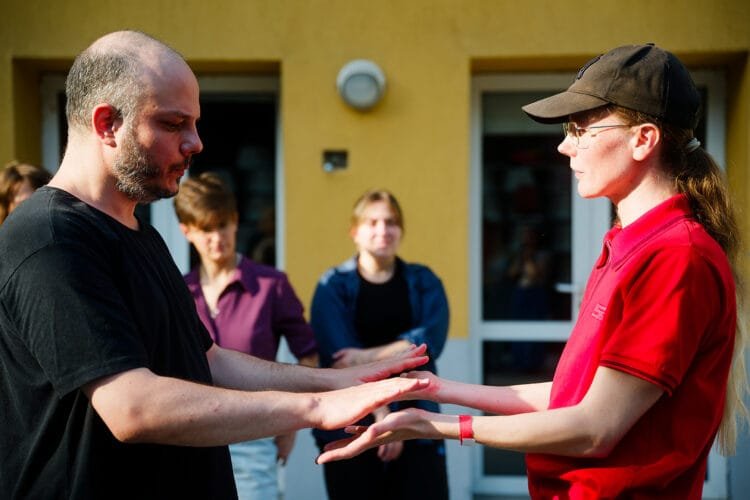
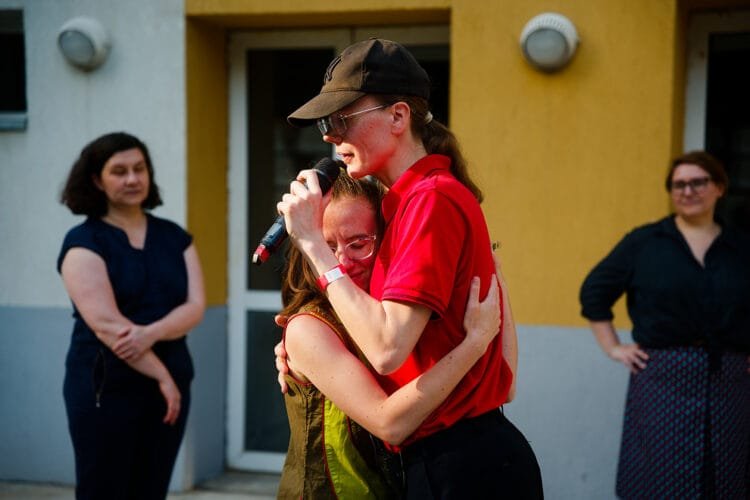
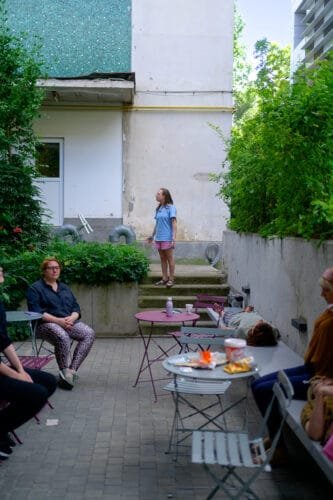
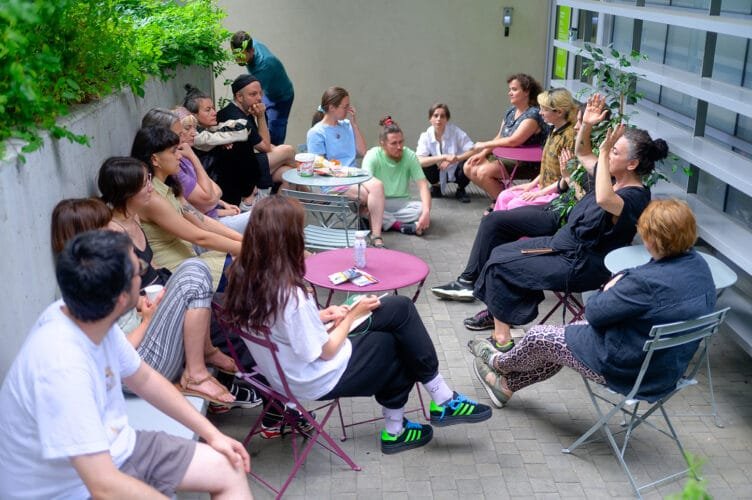
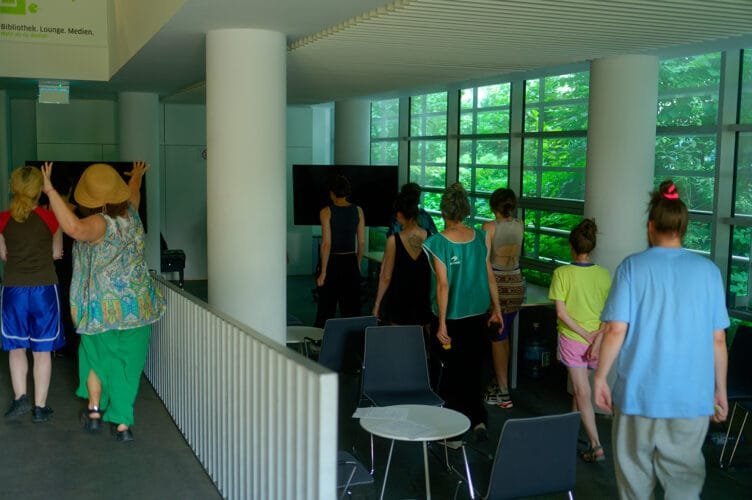
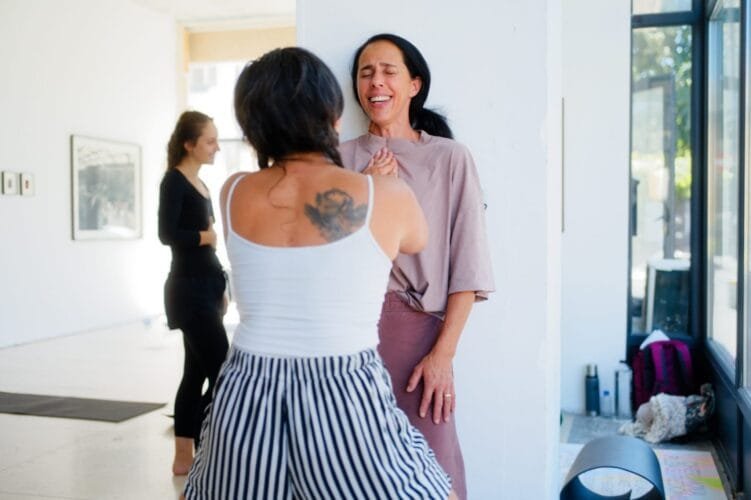
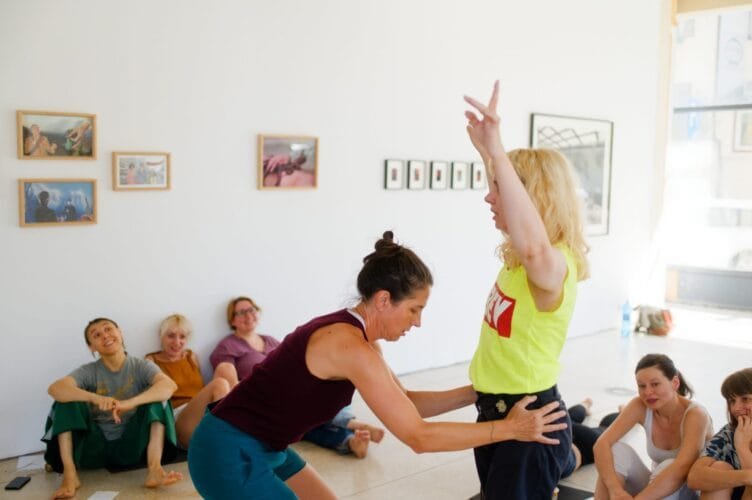
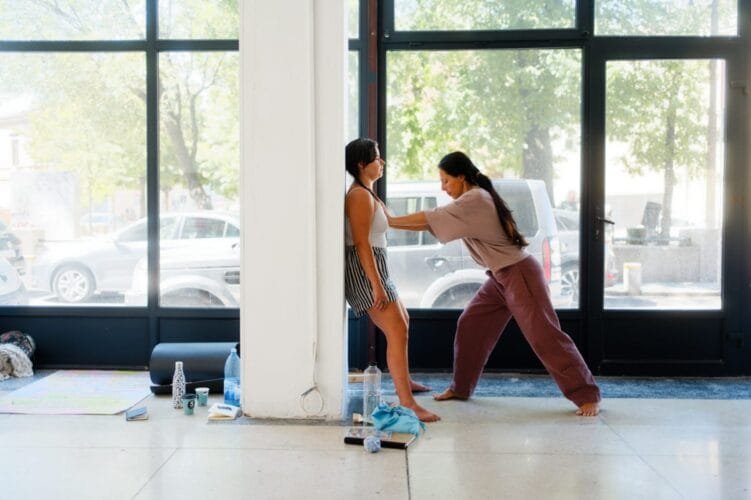
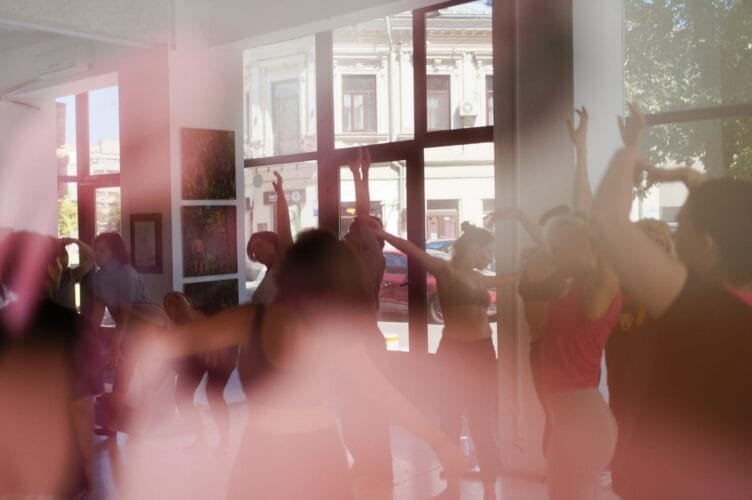
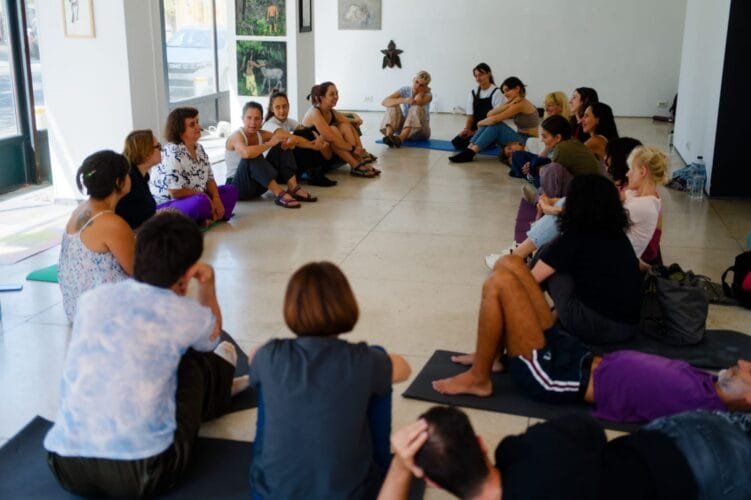
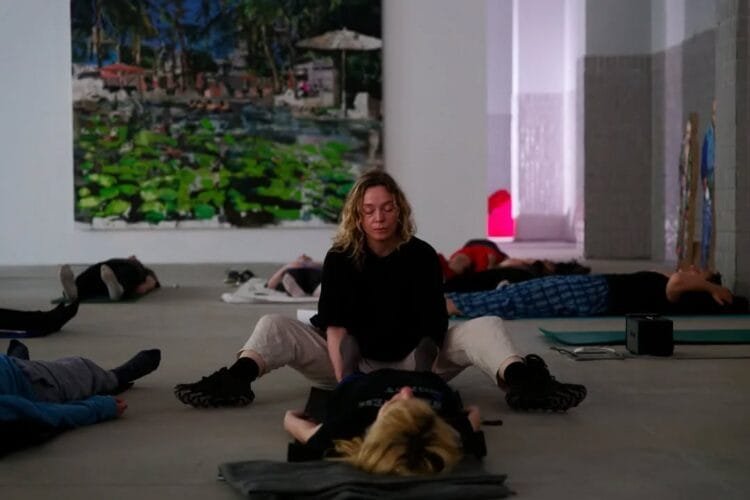
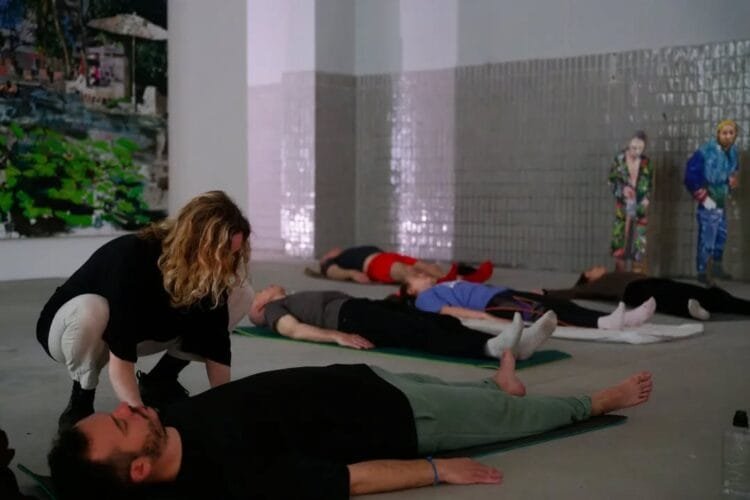
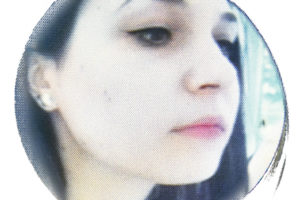
Comments are closed here.